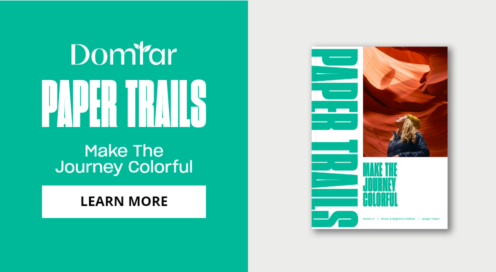At First Sight: The Jurassic Park Logo
Written by Julian Brown RGD, ON THE CHASE! Motion Design
Julian Brown RGD takes us back to a time when dinosaurs ruled the box office and one brand devoured the world.
I was only a nine-year-old the first time I watched Jurassic Park. I remember being as gobsmacked as the characters in the film seeing the dinosaurs for the first time. I remember the epic, oh-so-catchy musical score. I remember sitting pale-faced in my seat, my mother repeatedly asking me if I wanted to leave. I remember the mind-blowing rants of Dr. Ian Malcolm. The creepy, bird-like movements of the raptors. The jungle. The rain. That enormous eye.
But after the credits rolled and the visual feast was over, all I was left with was a skeleton. In the times before you could endlessly watch trailers and reviews online, I found my muse in the skeletal Jurassic Park logo. It was everywhere. Magazines, books, posters, cereal boxes and even “Pogs” all sported the badge and I followed suit by filling up my own sketchbook. I was completely consumed by the Hollywood marketing machine before I ever knew the term “integrated brand campaign.”

Design Choices
The Jurassic Park logo is inarguably iconic—but is it actually well-designed? As a kid, I was infatuated. Looking back now, after 4 years of design school and 15 years of professional experience, it seems pretty juvenile. High art, it is not. The decorative typeface Neuland (often problematic for racial stereotyping) misrepresents the tone of the movie. But what if it’s not for the movie? I firmly believe the logo was created to represent the fictional park itself. Through that lens, the oblivious going-on-safari mood aligns perfectly with John Hammond’s grand delusion that his deathtrap attraction would be great for kids. Just like the Park, the logo is naive and dangerous.
Following this thread, the image of the dinosaur skeleton is an odd choice. If one were to create marketing for a Jurassic Park in real life, the focus would be on the flesh and blood of the dinosaurs. That is, quite literally, the whole point of the Park. However, the film logo is an extension of the book cover (by Chip Kidd), which is devoid of any dinosaur skin at the request of author Michael Crichton. There were plenty of fantasy novels with colourful paintings of dinosaurs on the cover. He wanted his to be different. Kidd’s choice of the skeletal T-rex represents his writing—sharp, suspenseful, steeped in science.

In the logo lockup, these two disparate elements work together. The naïveté of the type alongside the spine-tingling silhouette. Admittedly designed by committee, 65 million meetings in the making, the logo somehow… found a way.

Marketing vs. Filmmaking
As a professional who’s worked on a few films, I understand now that graphic design is usually an afterthought in the industry. It is considered by most to be marketing, not filmmaking. Sometimes, graphic design is featured in the production design of a film—think The Grand Budapest Hotel—with Oscar-winning results. Jurassic Park is a rare instance where a new brand identity in the movie is also the brand identity for the movie (Ghostbusters, The Mighty Ducks). When and how, was this branding decision made? Was it done on purpose, from day one of pre-production? Or was it a happy accident months later, an executive simply saving on their marketing budget?
As the story goes, Steven Spielberg himself was bullish on the T-Rex from Kidd’s cover design. He turned down hundreds of other logo concept sketches before returning to the skeleton. Clearly the self-identifying “dinosaur nut” connected deeply with Crichton’s book. Spielberg knew the logo would be the face of the Park throughout the film. It would be on doors, vehicles, helmets, name tags and even lunch boxes, tying everything together. It was a filmmaking decision, not a marketing decision. And it was a big one. By my exact calculation, the logo has 22 minutes and 37 seconds of screen time in the final film. That’s 50% more than the dinosaurs. The logo is an integral character in the movie, reinforcing its themes of life and death.

Julian Brown RGD
ON THE CHASE! Motion Design
Julian Brown is ON THE CHASE! Julian creates ‘motion-first’ brands and content for smart clients (Sport Chek, University of Toronto, Cineplex, World Wildlife Fund). His motion design & branding projects have been awarded by Graphis, The Webbys, Adobe and many more. Julian is a speaker on motion design, running a solo studio, and, sometimes, telling people why their offices f*cking suck. He serves as a VP on the Board of Directors for RGD, Canada’s largest design association. Julian is a York/Sheridan Toronto alumni, a world traveller, and this one time he starred alongside his dog in a TV ad for pet food. It was adorable.
Tags
Related Articles


Zoë Boudreau Associate RGD, Loren Aytona Arena Associate RGD, Claudia Yuen


John Furneaux RGD












